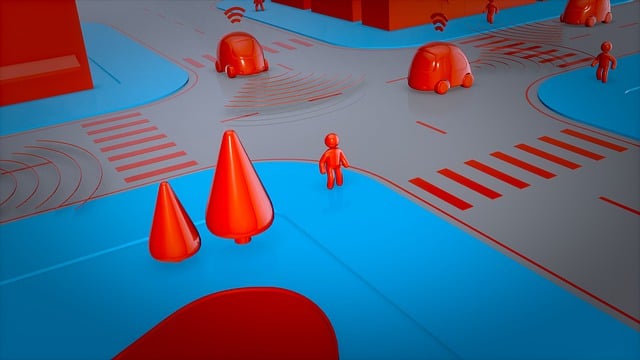Many entrepreneurs and innovative individuals have noted that 2019 had a giant impact on tech. In 2020, the trends of innovations are only growing bigger. As entrepreneurs, you should look at the many opportunities these tech industry trends pose.
Trends are nothing new in this digital age. Technology is a fast-growing part of our lives in society. New generations are experiencing a completely different facet of growing up. We have to adapt, learn, unlearn, and relearn a lot of things for the best chance of success in today’s world.
However, there are some pitfalls you may face. But, if you can pay close attention, you might have the ability to pioneer the newest cutting-edge piece of tech. With this, you can catapult ahead of all your competitors. However, it’s also important to remember that it’s not every new piece of tech that catches on.
Therefore, you have to carefully plan out your research and development (R&D) towards investments in new equipment. It’s a good thing as an entrepreneur to create anticipation towards new trends. When you do this, your budgeting and plans will be miles ahead of your competition.
In this article, we will detail some of these trends to guide you towards some ideas for innovation.
1.5G Technology

Today, 5G is not entirely available. However, 2020 has been the year of the race to 5G. Many countries are racing towards the commercial use of 5G technology. It’s a challenge for these countries because 5G is a networking breakthrough. Why? Because it holds the keys to the next big paradigm of the digital age. Currently, the hardware of technology is getting stagnant.
Consequently, people are clamoring for newer services. This is why the internet of things is more important than ever. We want to connect seamlessly from all our devices to the people around us. 5G is what will power the internet of things towards a more meaningful use and implementation.
Picture this; you have a self-driving car. On your commute to work, you can decide to read up on essential case files before you arrive at your destination. Or imagine receiving traffic information in real-time while your vehicle handles all the stress about rerouting. Your devices could automatically message the people at work on your location.
Also, companies are the biggest benefactors of 5G technology. Why? Well, assembly and factory processes will be much faster, and new ideas for automation can receive implementation. Many great factory robots have not seen the light of day due to the limits of our networking technology. With 5G, production will be faster, cheaper, and more efficient.
There are so many great applications for the internet of things and 5G. However, the latency and connection speeds currently available are extremely limiting factors.
2.Artificial Intelligence

Artificial Intelligence is a great part of the many tech industry trends for 2020. Many people have waited for the day we will see AI in our daily activities. With the many forms of media portrayal on AI, the general public has an idea of AI they want to see. Although movie AI is scary or cool to see, there are many more useful forms of AI that are growing and receiving research and investments
.
With these new forms of AI, we see vast improvements in some aspects of our lives. From deep learning to machine learning, we know the way AI affects our social media timelines. These machine learning algorithms are great for showing us things we want to see at all times.
Furthermore, innovations in artificial intelligence are changing the way we make art, communicate with one another, and create drugs. These are opening the potential for breakthroughs in the way we see things around us. With drugs and toxicology, professionals are now finding new ways to run new drugs through virtual simulations at quick speeds. Because of this, professionals can run more tests for the best possible results.
3.Autonomous and self-driving vehicles

Today, many advancements are growing with cars. Autonomous and self-driving vehicles are a significant advancement worth considering. A few companies are aiming for full autonomy with self-driving vehicles. Because of the many claims of full autonomy, some guidelines are set for companies to follow that classify self-driving vehicles into six classes. Starting from Level 0 to Level 5.
Levels of Self-Driving and Autonomous Vehicles
According to the National Highway Traffic Safety Administration (NHTSA), these are the following levels:
Level 0 Autonomy: Vehicles that are classified as Level 0 have no form of autonomy. In other words, the driver is the only one in complete control of all features of a vehicle.
Level 1 Autonomy: These are vehicles that cannot execute more than a single autonomous task at a time. Even then, the only autonomous tasks they perform are usually dedicated to special safety procedures.
Level 2 Autonomy: Vehicles with Level 2 autonomy can perform two autonomous tasks at once. For example, they can activate adaptive cruise control or automatic brakes.
Level 3 Autonomy: These are vehicles that can perform self-driving features when certain conditions are met. These conditions are mainly good weather and a self-contained environment. There aren’t many vehicles with level 3 autonomy. However, the 2020 Audi A8 is considered an autonomous vehicle.
Level 4 Autonomy: Vehicles with level 4 autonomy have full autonomy. However, they can only utilize this autonomy under specific speeds and terrain. The driver is not required to take full control of the vehicle when these conditions are met. However, the driver has to be in control when the car can no longer handle a situation.
Level 5 Autonomy: Level 5 autonomy is when a vehicle is fully self-driving and autonomous. In other words, the driver can kick back and relax during their commute while the car takes full control of the entire journey. Currently, there are no Level 5 autonomous vehicles in existence. However, with the constant research, 2020 might be the year we finally receive one.
Self-driving vehicles are among the most anticipated tech industry trends. It’s a significant part of the digital age that is worth watching.
4.Blockchain Technology

Cryptocurrency and Blockchain have been fast-growing for a long time now. Each year has seen a higher rise in the popularity of Blockchain and Cryptocurrency than the previous ones. Due to its decentralization, transparency, and immutability, cryptocurrencies are a decentralized form of transactions.
Through cryptocurrency, people can send or receive funds in a way that is secure and encrypted for both parties.
How cryptocurrency works
Both parties in a transaction agree to make payments without the need of a central server. The main goal with cryptocurrency was to create peer-to-peer e-cash transactions that are successful without the need of a central server. Without a central server, people make their transactions successfully and securely. This is important because the primary goal of cryptocurrency is for the users to be in control of all their operations.
Cryptocurrency in 2020
As one of the many tech industry trends of this year, cryptocurrency has proven useful in many areas. 2020 has new areas with relevant applications of cryptocurrency. A big challenge faced with cryptocurrency involves banking and insurance fields. Many innovations and investments are pulling towards decentralized organizations and intelligent contracts.
5.Improved Cybersecurity

In recent times, many cybersecurity attacks have affected organizations on massive scales. These attacks are growing as a result of the loopholes with many security protocols in organizations. There is a huge demand for better cybersecurity. In 2020, many organizations are making the necessary moves towards improving what we currently have.
To curb these cybersecurity attacks, some organizations are utilizing machine learning and artificial intelligence. How? Well, these methods will help with predictions and preventions of these attacks. With AI, they can learn and prevent attacks at a fast rate.
Also, there are many efforts towards limiting access to some software and technology. For example, due to the lawsuits against Facebook, the laws with many tech companies have changed. Data and information privacy is now a priority with these companies. Therefore, access from third-parties is hugely reduced in 2020. The security of cloud services and networks associated with these companies have improved in 2020 as well.
Furthermore, there are some firms and startups in 2020 dedicated to improving the cybersecurity of smaller companies. These companies are a great investment for all tech-related organizations in 2020. If one can’t afford this, they can educate their staff and update terms of service with third-parties for better cybersecurity and a more streamlined process for all data.
6.Edge Computing

With the Internet of Things and edge computing. We can be more connected than ever. There are many great applications of IoT that will define our future with technology.
What exactly is edge computing?
Among the tech industry trends, edge computing is one that will serve an ultimate purpose for everyone. It is a method of computational processing that relies on Artificial Intelligence in all our devices. This, combined with the processing of data from sensors in a way that transfers the data to the closest local edge of a network towards the sources of data. With this, we can cut down on bandwidth and storage used to process information.
Edge computing is the future due to its extremely low latency required. When something has low latency, they don’t need many milliseconds to transfer data between sources. As a result, Edge computing is what will power the internet-of-things in the future.
Examples of Edge Computing today
Autonomous and self-driving vehicles, as explained above, are a great form of edge computing. How? Well, self-driving requires real-time processing which is best with low latency. When there is low latency, data from the vehicles to traffic lights, other self-driving vehicles, and many other IoT devices will process quickly. As a result, all those pieces of info will make driving on the road safer.
Voice Assistants are another form of edge computing worth looking at. Today, many voice assistants like the Amazon Echo, Siri, Google Home are great ways the boundaries of AI are being pushed. These devices are incredibly useful at tasks. Compared to 5 years ago, voice assistants are no longer gimmicks. Instead, they are a great way to harness technology. By 2020, it is estimated that over 30% of technology users will use voice assistants for regular interactions.
Maintenance Predictions have the potential also to change the way manufacturing processes are executed. Today, many companies are channeling investments toward better manufacturing. In particular, their finances are prioritized towards the innovations in edge computing and manufacturing. With research, professionals have found a way to predict when maintenance is required for all manufacturing machines.
Management of Fleet is an integral part of logistics services. These services utilize IoT for the vehicle to vehicle interactions and communications. With this, you can effectively coordinate traffic flows and movement. With this, you can communicate important information and analytics.
What is the internet-of-things?
The internet of things is what happens when we connect everyday objects through the internet. In other words, a world where your speaker, fridge, earphones, car, alarm, laptop, phone, and other devices are fully connected. Through the internet of things, we can fully connect all these devices, and they can communicate with each other.
For example, driving to work, and your speaker automatically switches to your commute playlist at a time it was notified by your alarm clock. With Edge Computing, these processes are a lot faster and effective.
7.Better Augmented Reality

Augmented Reality is an integral part of the tech industry. It is what pushes the limits of technology and the real world. With AR, we can use a virtual world to interact with the real world.
In 2016, the world saw its first experience of a commercially successful form of AR. How? With Pokemon Go, people were taken by storm. We saw the potential of AR, and many people began to interact with this virtual world in a global phenomenon. However, since the 2016 craze, not many people have been enthusiastic about AR. The interactions were limited and stale after a while.
However, many companies are trying to change the way we see AR. Today, we have many useful real-world applications for AR. AR has been a substantial investment for many tech companies. It’s one of the tech industry trends that will improve the way we interact with things.
At Apple, their research towards AR has netted them success in better processing power and efficiency for Augmented Reality tasks. With the recent iPhone 11 Announcement, AR is even better integrated with Apple devices and faster than ever. On Apple devices, there are also new apps that utilize AR for measurement.
It has improved with many updates, and today, AR can be used for interior design measurements.
Furthermore, AR is beneficial for the medical field. With AR, there are new horizons in medicine. Now, people can add essential AR elements to their learning and surgery processes. As a result, people now have better chances of successful surgeries.
Virtual Reality
For Virtual Reality, 2020 has been a year for innovations. Among the many tech industry trends, people have had high hopes for the future of VR. Virtual Reality promises a whole new virtual world we can interact with. Through VR, we can have immersive video games. VR in gaming is what will help the future of the medium. Through movies like Ready Player One, people have a solid idea of what they expect the future of gaming to look like.
As a result, many are hopeful for VR. VR is an excellent form of interaction with technology. It’s great for recreation and is helpful for the rehabilitation of older people. Also, VR is opening a new horizon for medicine alongside AR.
8.Augmented Analytics and Data Processing

This trend represents another stride for Big Data, with the aid of combining it with Artificial Intelligence. Using Machine Learning (automated learning), it will transform the development, sharing, and consumption of data analysis. It is predicted that the capabilities of Augmented Analytics will quickly be oftentimes adopted no longer only to work with data, however additionally to put into effect in-house business functions related to human resources, finance, sales, marketing, and consumer help – all with the intention to optimize choices by way of the usage of deep Data Analysis.
Augmented analytics leveraging natural language technology (NLG) will radically change the way organizations, executives and data specialists glean more accurate perception and deepen engagement from their data. Adoption of herbal language to surface the most essential findings in a fraction of the time will make facts science greater accessible, growing citizen data scientists for the duration of all business roles.
All these duties are typically carried out through Data scientists, who spend 80% of their time on collection and education of Data, and simply the remaining 20% on discovering insights. The purpose of Augmented analytics is to automate the approaches of facts series and facts training in order to retailer Data scientists 80% of the time. However, the real, closing purpose of Augmented analytics is to definitely exchange the Data science groups with AI, taking care of the whole analysis technique from statistics series to business suggestions to decision-makers.
To make it very clear, you may want to imagine asking the Augmented analytics tool to find on-line critiques about one of your products and tell you what you have to enhance to sell more of it, having the desktop responding to you with a clear textual answer and some compelling charts.
9.Improved digital ethics

In 2018, we saw a backlash against tech — swirling headlines around the negative effect of technology on our democratic process, society, interpersonal relationships and so on. However, there was a dearth of solutions, whether or not in the concept of alternatives or the introduction of policies or different first-class practices.
This will see this: What we use, and how we use it, will differ from today. Digital ethics and privateness are topics that are receiving more and greater interest from both personal men and women as properly as associations and government organizations. For good reason, people are an increasing number of worried about how their personal records are being used through public and non-public region organizations. Therefore, we conclude that the winning corporations will be those that proactively address these worries and are in a position to earn their customers’ trust.
The very notion of AI (understanding and reproducing human cognition) forces us to hold a mirror up and reconsider the biases and assumptions embedded in the information we use to instruct AI models. It forces us to reflect on consideration on implications of new digital interfaces like voice and facial attention and reconsider structures for accountability when we can’t solicit explanations from machines. It forces the arbiters of AI, agencies, in particular, to ask an untold range of societal questions they have but to confront. 2020 marks the 12 months a new enterprise competency is born: a formal approach to digital ethics.
10.Better E-Commerce Sales

E-commerce has evolved to make products less complicated to discover and buy thru online outlets and marketplaces. Independent freelancers, small businesses, and massive corporations have all benefited from e-commerce, which permits them to promote their goods and offerings at a scale that was no longer possible with traditional offline retail.
E-commerce is such a handy way to shop. It’s easier to charge test and saves us a ton of time. I think we’re going to see a persisted upward shove in people purchasing everyday consumables online. Things like paper towels, dishwasher detergent, toothpaste — all the things that would normally classify as an “errand” and day trip to the keep will see a boost in online sales.
Conclusion
Throughout the history of the digital age, the tech industry has remained at the forefront of what we are capable of as a society. In order to fully realize these innovations, many tech industry trends have developed. Trends reflect the societies they serve. As it stands, the main trends of the tech industry are channeling towards the dependence of AI and our devices for many tasks. 2020 has shown many new breakthroughs with better innovations on the horizon. Therefore, it’s quite exciting to watch out for what comes next in the tech industry.








































Leave a Reply